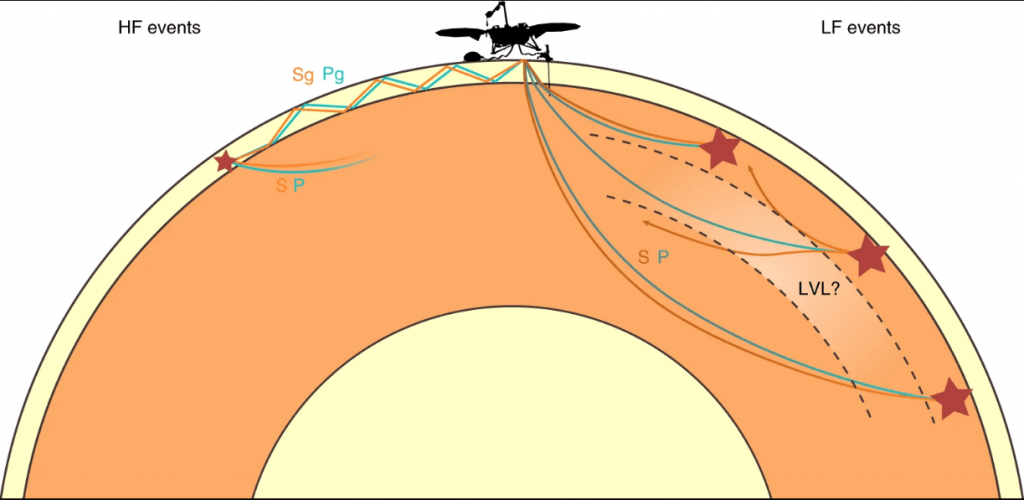One Full Year of Seismic Data Collected by Mars Insight Includes 500 Quakes
By Andy Tomaswick
The English vocabulary has some words that only make sense from an Earth-bound perspective. Earthquake is one of those. Even in some science fiction and fantasy books, where the action takes place somewhere other than Earth, that team is used to denote the ground shaking. It’s therefore nice to see planetary scientists trying to expand the root word to other planets. Marsquakes are the most commonly studied, and now thanks to InSight scientists have collected a full year of data on Marsquakes for the first time.
Led by Savan Ceylan of ETH Zurich, the team presented their findings at the 2021 Annual Meeting of the Seismological Society of America. Data was collected from SEIS seismometer, an instrument on InSight that is physically touching the surface of Mars. It was extremely painstaking as Marsquake are generally much weaker than their Earthen cousins, with the maximum amplitude measuring 3.6 on the Richter scale.
credit: NASA / JPL – Caltech / ETH Zurch / Van Driel
Patterns were evident in the data as well. Marsquakes apparently come in two varieties – high frequency and low frequency. High frequency waves travel around the planet in the crust and appear to last much longer, like moonquakes do. Low frequency waves use the mantle as their main means of transport and die out much more quickly, in similar time scales to earthquakes.
Another pattern the scientists were looking for is called “seismic phase arrivals”. This happens when different types of seismic waves from an event arrive at a location in a different order. That order allows scientists to perform a technique similar to triangulating a wireless signal and locate the source of the marsquakes. Interestingly, all of the marsquakes that came with a seismic phase arrival pattern originated in the same part of the planet – Cerberus Fossae, which is located about 1800 km away from InSight’s location.

Credit: NASA/JPL/University of Arizona.
Cerberus Fossae is a relatively young feature of the red planet that is still being studied to try to determine what makes it geologically active. Tools like SEIS are one way to help determine that. However, scientists looking to use it data will have to contend with one of the sensor world’s biggest problems – noise.
In some ways, the seismological noise on Mars is easier to deal with than that on Earth. There are no waves constantly pounding the crust and the thin atmosphere is calm during the night. However, even what little atmospheric disturbance there is on Mars can still disrupt readings, as can other unwanted noise from the weather and the lander itself.

Credit: Giardini et all
Dr. Ceylan’s team managed to work out a filtering method that allowed them to properly understand even the very small marsquakes that InSight was able to pick up. With that filter comes a better mechanism for future studies of Mars’ seismological activity. Someday there might even be humans on the planet to place seismometers in even more interesting places. Then we will really be able to understand the difference between an earthquake and a marsquake.
Learn More:
SSA – Seismicity on Mars Full of Surprises, in First Continuous Year of Data Collection
UT – After a Challenging First Year on Mars, InSight Shows Us that Mars is Seismically Active
UT – InSight Has Already Detected 21 Marsquakes
UT – InSight Just Detected its First “Marsquake”
Learn Image: Image of Mars.
Credit: NASA / JPL – Caltech / ETH Zurch / Van Driel
The post One Full Year of Seismic Data Collected by Mars Insight Includes 500 Quakes appeared first on Universe Today.

May 7, 2021 at 05:06PM
via Universe Today read more...

Post a Comment